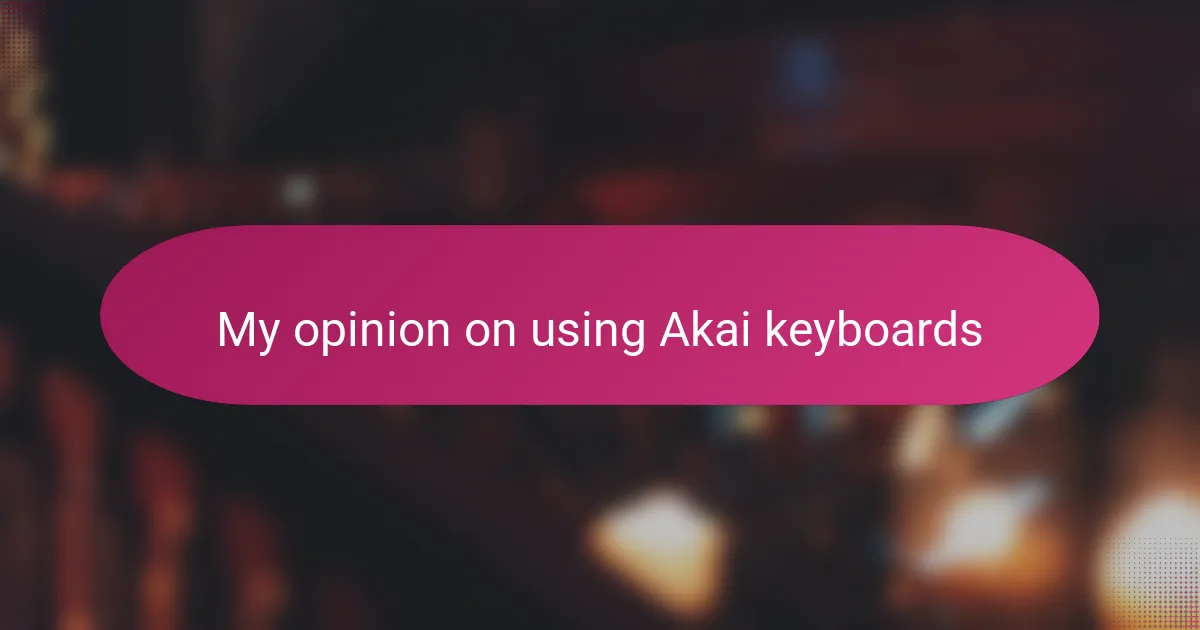Key takeaways
- Akai keyboards enhance the music production experience by allowing seamless integration of traditional playing with modern production techniques, fostering creativity and emotional connection.
- The velocity-sensitive pads and extensive sound libraries offered by Akai keyboards enable producers to express subtlety and aggression in beats while speeding up the creative workflow.
- Customizing pad sensitivity and utilizing onboard samples can significantly improve performance and inspire unique ideas, making production sessions more dynamic.
- Easy integration with digital audio workstations (DAWs) minimizes technical frustrations, allowing artists to focus on their creativity and maintain the flow of music creation.
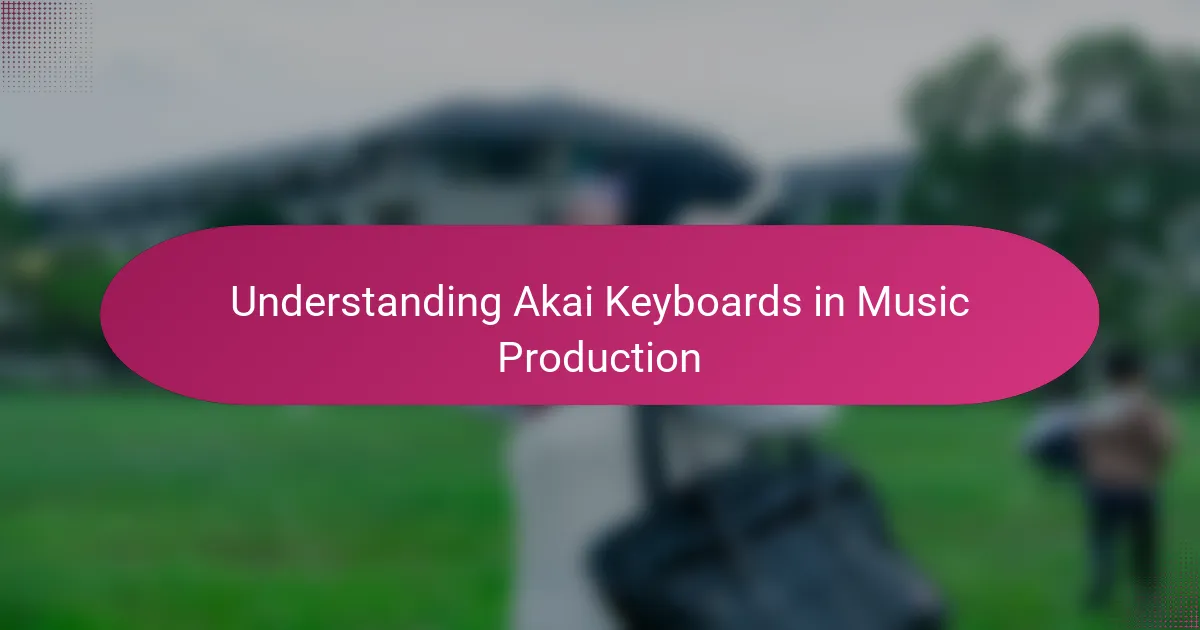
Understanding Akai Keyboards in Music Production
Akai keyboards have always struck me as more than just instruments—they’re powerful tools for shaping sound in rap music production. Their intuitive interface and responsive pads make crafting beats feel natural, almost like an extension of my own creative flow. Have you ever felt that moment when your hands just seem to know exactly where to go? That’s what working with an Akai keyboard often feels like.
One thing I appreciate deeply is how Akai keyboards bridge the gap between traditional keyboard playing and modern production techniques. You’re not just pressing keys; you’re triggering samples, adjusting effects, and layering textures all in one sleek device. This versatility has saved me countless hours, enabling me to experiment freely without interrupting my momentum.
What really sets Akai apart, in my opinion, is the emotional connection it fosters between the artist and technology. Using one in the studio doesn’t feel sterile or mechanical—it feels alive. That’s crucial when you’re trying to inject authenticity and raw emotion into your rap tracks, isn’t it? It’s like having a collaborator who understands your vibe.
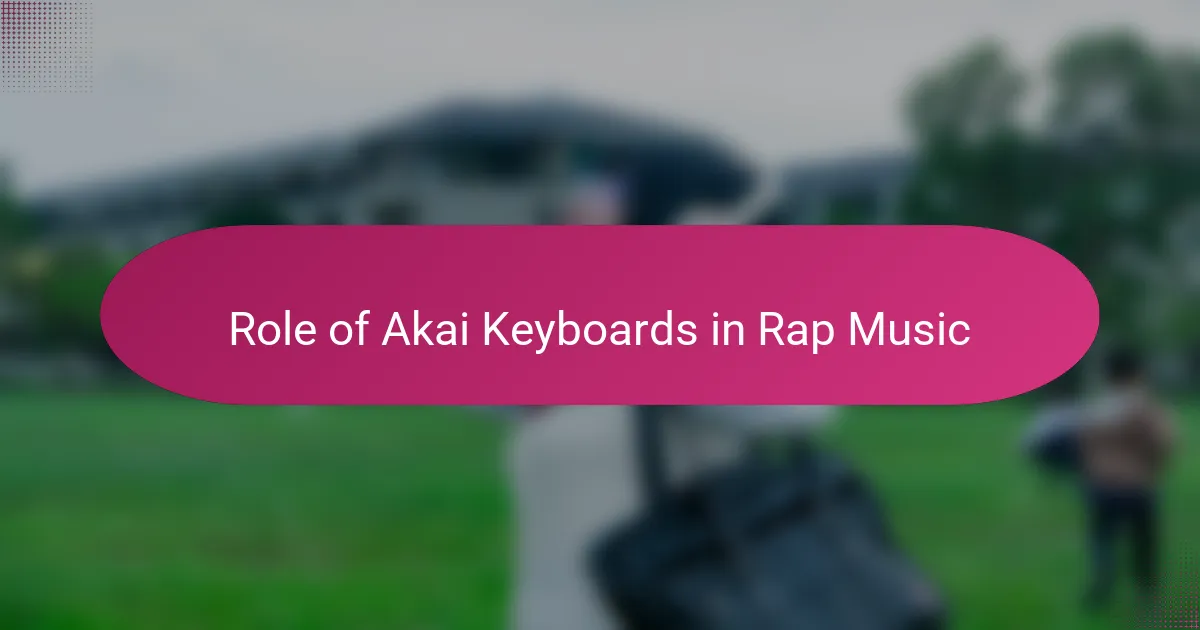
Role of Akai Keyboards in Rap Music
When I think about the role of Akai keyboards in rap music, I can’t help but recall those late-night sessions where the pads become my rhythm section. It’s fascinating how these keyboards have become central to building the beats that define the genre’s pulse. Have you noticed how a simple tap on an Akai pad can spark an entire track’s energy?
From my experience, Akai keyboards don’t just generate sounds; they shape the vibe of a rap song. They offer a tactile experience that invites experimentation, which is vital when crafting beats that need to feel both fresh and authentic. That hands-on element helps me connect emotionally with the music, making every beat hit harder.
What really stands out to me is how these keyboards streamline creativity. Instead of fumbling through complicated gear, Akai lets me focus on the feel and flow of the music. Isn’t that the heart of rap production—capturing raw emotion quickly before it slips away? Using an Akai keyboard has made that process smoother and more inspiring every time.
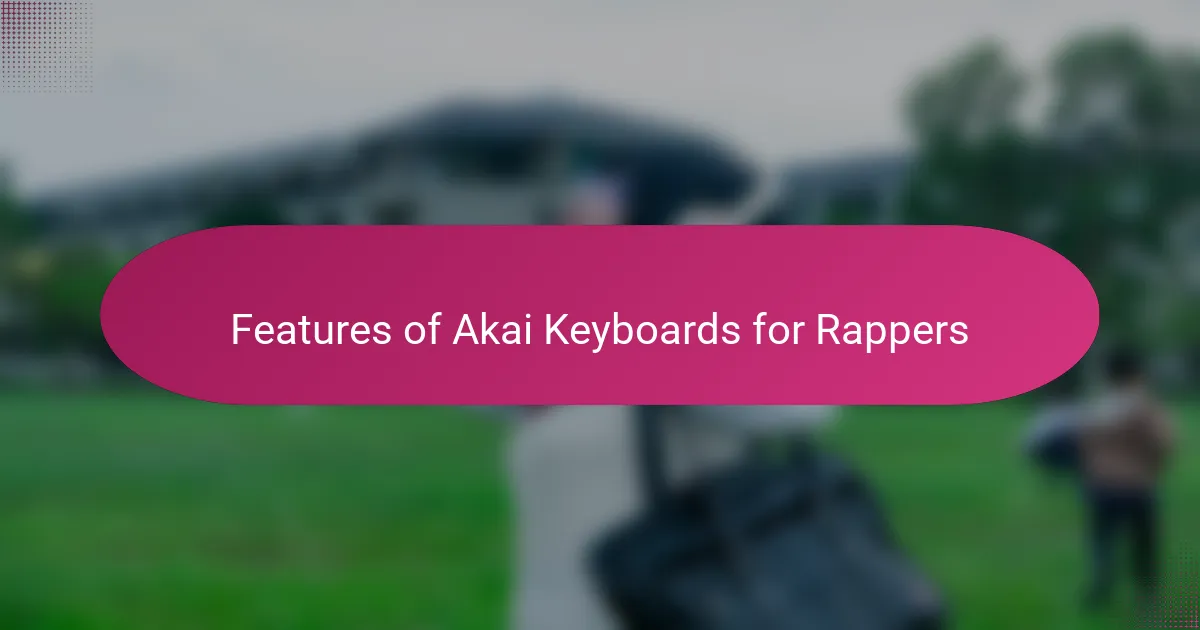
Features of Akai Keyboards for Rappers
One feature of Akai keyboards that I find indispensable is their velocity-sensitive pads. They allow me to control the intensity of each hit with my fingertips, which is crucial when I want to bring subtlety or aggression to a rap beat. Have you ever tried making a drum pattern that feels lifeless? Those pads prevent that by responding to every nuance of your touch.
Another aspect I really value is the extensive sample and sound libraries built into Akai keyboards. Having a diverse palette right at my fingertips means I’m never stuck hunting for sounds online. That convenience speeds up my workflow and often sparks unexpected ideas—sometimes a single sample triggers a whole new track concept.
Then there’s the seamless integration these keyboards offer with popular digital audio workstations (DAWs). From experience, being able to connect straight into my setup without complicated routing saves me from technical headaches. When creativity strikes, the last thing you want is to wrestle with your gear, right? Akai’s ability to keep things simple makes it easier for me to stay in the zone.
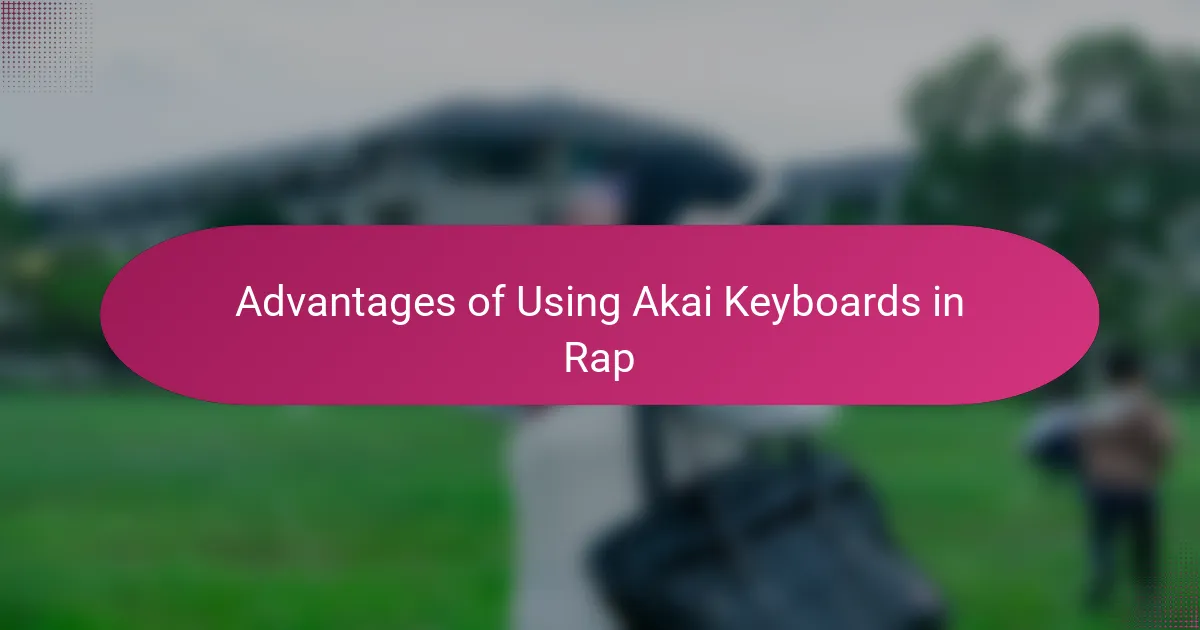
Advantages of Using Akai Keyboards in Rap
What I love most about using Akai keyboards in rap is how they empower me to translate my ideas directly into sound with minimal fuss. Have you ever been stuck trying to capture a beat that’s buzzing in your head, only to lose it because your gear isn’t keeping up? With Akai, that disconnect almost disappears—I find myself locked in the moment, layering rhythms and melodies as if the keyboard is reading my mind.
Another thing that stands out to me is the creative freedom these keyboards provide. It’s like having a versatile toolbox where every pad and key invites me to experiment, tweak, and redefine what a rap beat can be. I remember sessions where a simple drum pattern turned into a full song because the keyboard made switching between samples and effects super fluid. That kind of flexibility has really changed how I approach producing.
Plus, the tactile feedback from Akai’s pads adds an emotional dimension to making beats. When I hit those pads just right, it feels like I’m not just programming sounds but actually performing the energy behind the track. Isn’t that what brings a rap song to life—the connection between human feeling and machine precision? For me, Akai keyboards strike that balance perfectly.
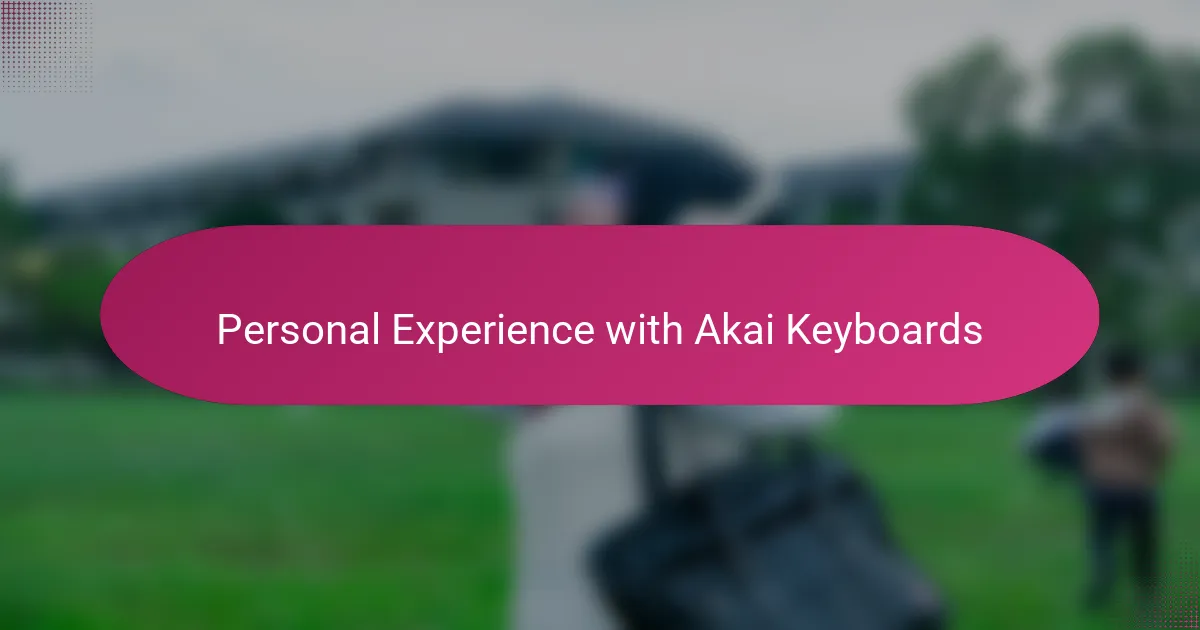
Personal Experience with Akai Keyboards
When I first got my hands on an Akai keyboard, I was struck by how quickly I could translate ideas into beats. There were moments when I’d sit down with a vague rhythm in my head and, within minutes, the pads and keys had brought it to life. Have you ever experienced that flow where everything just clicks? That’s the kind of immediate connection I had with my Akai.
One session stands out vividly: I was experimenting late at night, tired but inspired, and the velocity-sensitive pads let me express subtle variations that made the beat feel alive. It wasn’t just about hitting notes; it was about conveying mood and energy through each touch. That emotional nuance is something I rarely found in other gear.
Sometimes, I think the best test of any instrument is how it handles frustration—and Akai keyboards have saved me from more than one creative block. Instead of getting bogged down by technical glitches or clunky interfaces, I could keep my focus on the music. Isn’t that what every producer wants? To stay in the zone without the gear getting in the way? For me, Akai made that possible again and again.
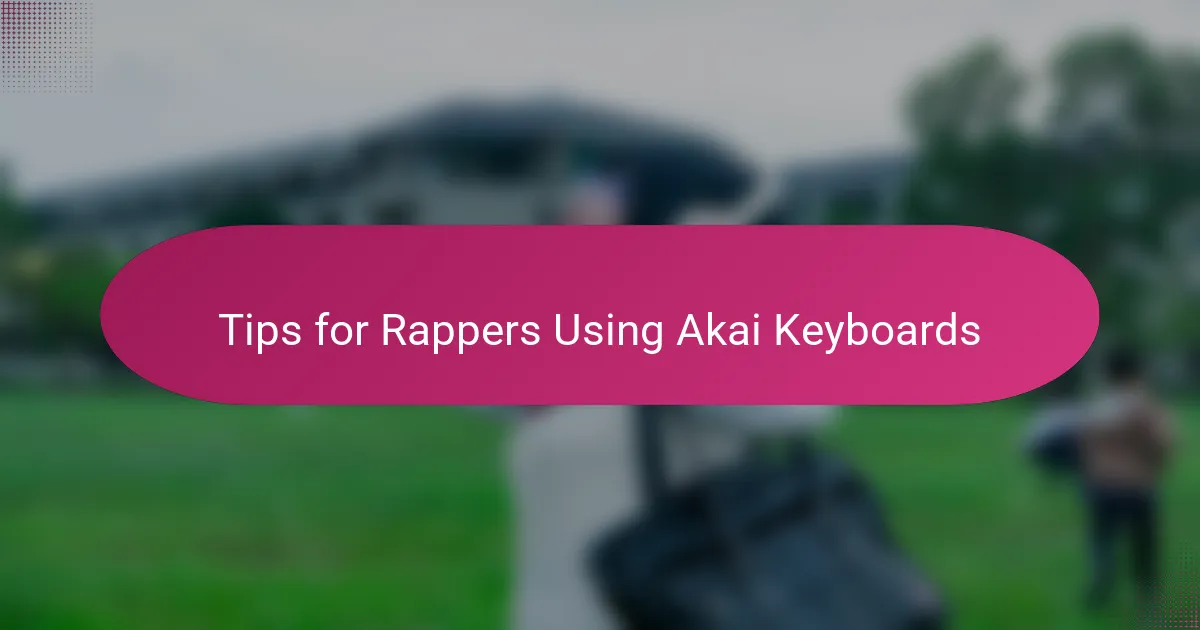
Tips for Rappers Using Akai Keyboards
One tip I always share with fellow rappers is to spend time customizing your Akai keyboard’s pad sensitivity. I remember tuning mine to respond just right—not too soft, not too hard—and that made a massive difference in expressing the exact energy I wanted in my beats. Have you noticed how small adjustments can completely change the vibe of a track? That tactile control is what makes your performances feel real.
Another piece of advice is to use the onboard sample libraries creatively. When I first explored Akai’s built-in sounds, it felt like unlocking a treasure chest. Instead of hunting endlessly online, I let those samples inspire fresh ideas on the spot. Why not challenge yourself to flip a preset sound into something totally unique? It pushes your creativity and stops sessions from getting stale.
Finally, never underestimate the power of integrating your Akai keyboard tightly with your DAW. I’ve had moments where smooth synchronization saved my workflow from crashing. Getting comfortable with the shortcuts and MIDI mapping early on means less tech frustration and more time feeling the groove. Isn’t that the essence of producing rap—staying in the moment and letting the beat guide you?
